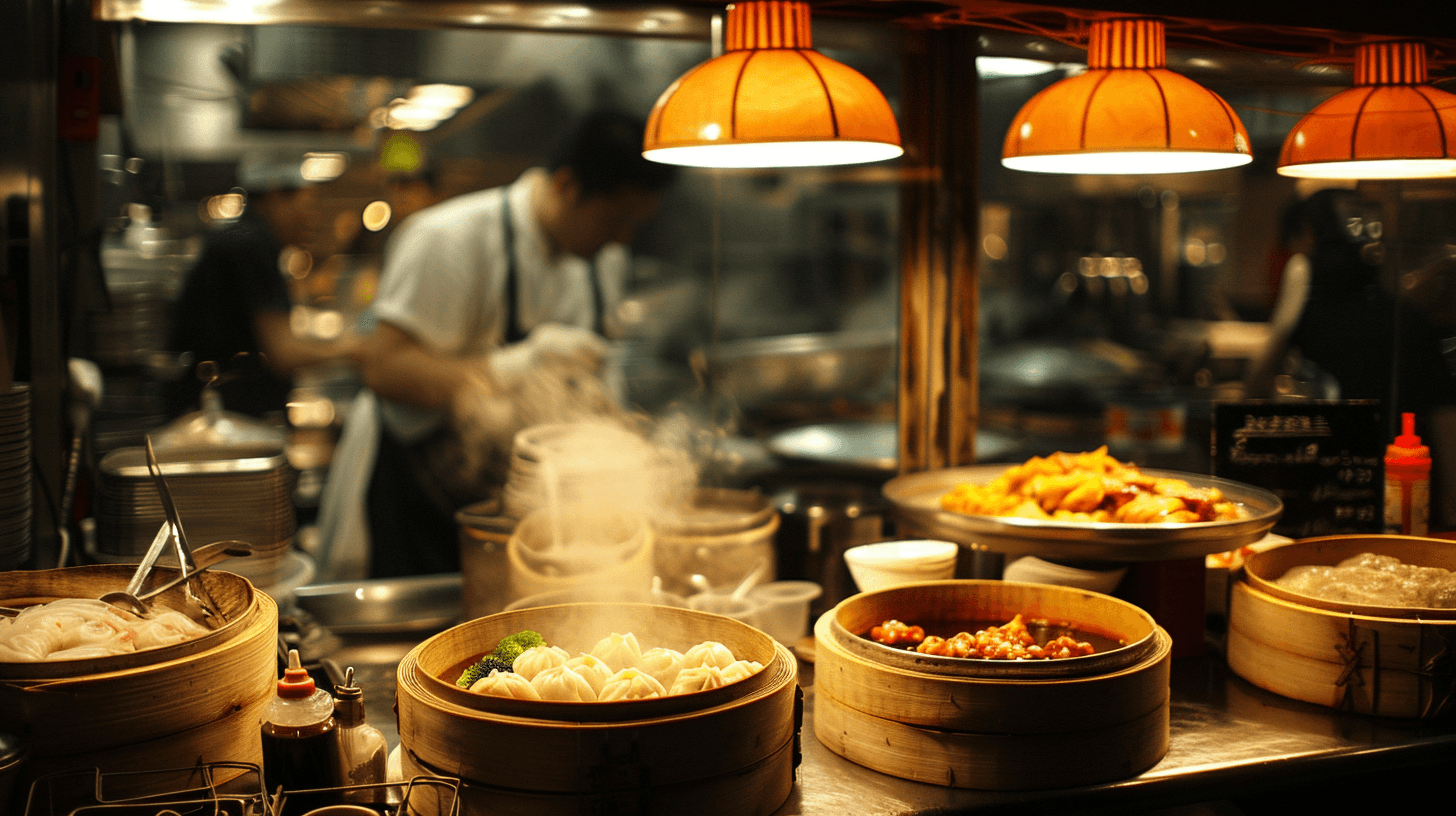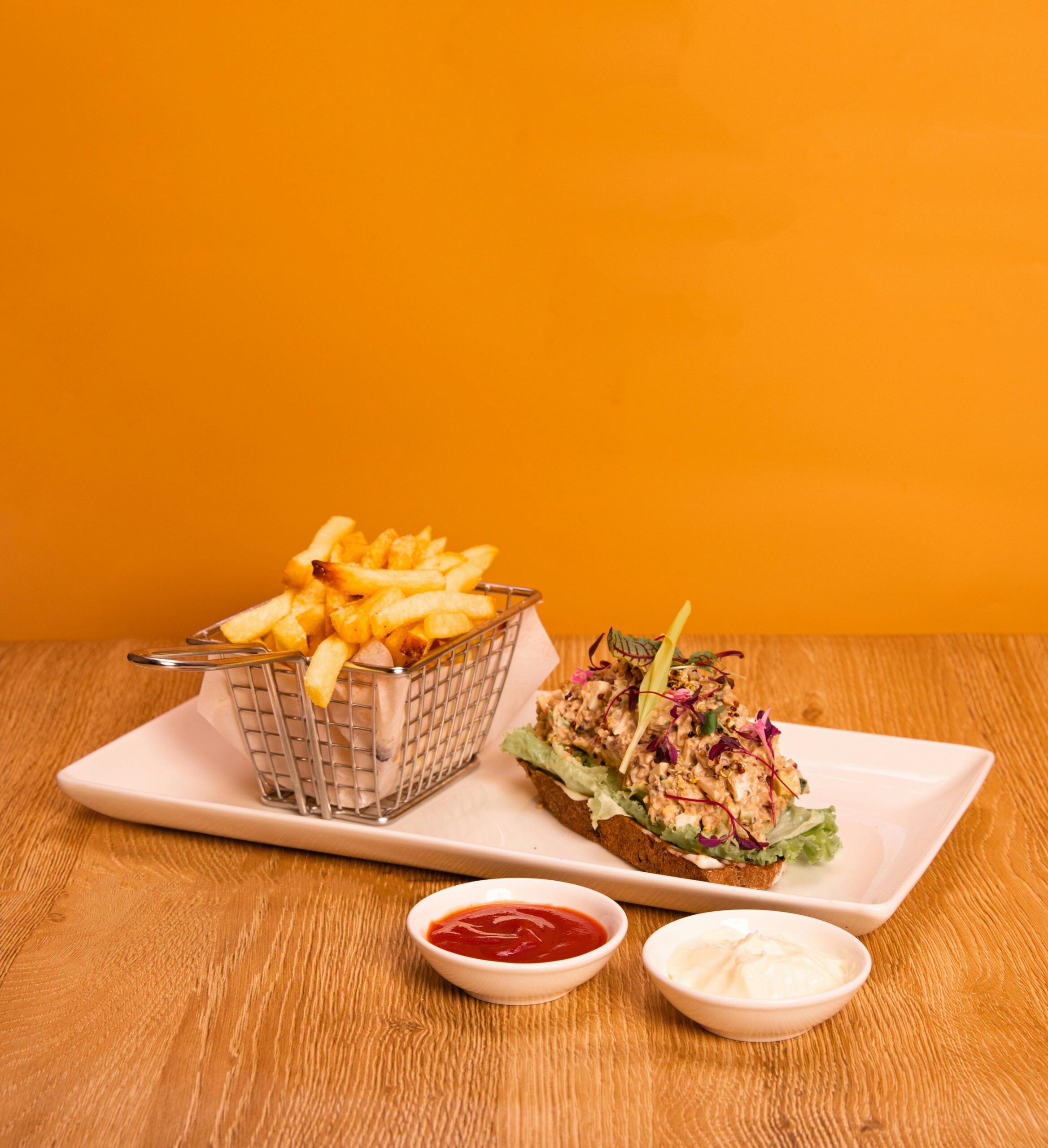- 7 Reasons Why Chinese Restaurants Are So Successful
- What are the Major Chinese Food Industry Profit Sectors?
- Critical Factors Driving the China Food Service Market Size
- How Chinese Restaurants Use Different Tactics to Draw Customers
- Orders.co for Your Chinese Restaurant Success
Did you know that Chinese restaurants are everywhere in the U.S.? They’re in every state and 70% of all counties.
This shows how much people across the country love Chinese food.
The success of Chinese restaurants didn’t happen overnight. It took many years of robust immigrant determination and grit to have the successful restaurant chains we see today.
In this guide for independent restaurant owners, we’ll cover some of the stand-out factors of the Chinese restaurant industry to help your current or future restaurant business succeed.
7 Reasons Why Chinese Restaurants Are So Successful
In the US, Chinese food has an average of over 3.35 million searches per month, making it Americans’ favorite food (according to a study by foodfirefriends.com).
So, what are the main reasons behind these positive financial projections?
Diverse and Appealing Menu
Chinese restaurants offer various dishes with diverse flavors, catering to a broad range of tastes. From savory stir-fries to comforting noodle dishes, the menu provides options for everyone.
Customization and Flexibility
The ability to customize meals according to individual preferences, such as choosing specific proteins, vegetables, and sauces, allows customers to tailor their dining experience, adding an element of personalization.
Embracing Fast-Casual Trends
Chinese restaurants have adeptly embraced the fast-casual dining trend, providing quick and convenient service without compromising on the quality of the food. This aligns with the modern demand for efficient yet satisfying dining experiences.
Cultural Popularity and Familiarity
Chinese cuisine has become an integral part of American food culture. Iconic dishes like General Tso’s Chicken and Sweet and Sour Pork have gained widespread popularity, making Chinese restaurants a familiar and comfortable choice for many.
High-Quality Ingredients
The emphasis on using fresh and high-quality ingredients contributes to the overall appeal of Chinese cuisine. This commitment to freshness enhances the flavor and quality of the dishes served.
Affordability
Chinese restaurants often provide affordable dining options, making them accessible to many customers. This affordability contributes to their popularity, especially in the context of diverse and budget-conscious consumer preferences.
Family-Friendly Atmosphere
Chinese restaurants often create a welcoming and family-friendly atmosphere, making them suitable for various dining occasions. This inclusivity encourages repeat visits and builds a sense of community around these establishments.
What are the Major Chinese Food Industry Profit Sectors?
The thriving Chinese food service sector plays a pivotal role in contributing to this global economic surge:
Chinese In-Store Snacks
Within the Chinese food service market, the in-store snacks segment stands out as a dynamic and influential player. The demand for quick and tasty Chinese snacks on-the-go has fueled a significant portion of the market’s growth.
Whether it’s traditional favorites like dumplings and spring rolls or modern twists on classic recipes, in-store snack options contribute substantially to the overall market size.
Examples of In-Store Snacks
- Baozi (Steamed Buns): These fluffy and savory buns come with various fillings such as pork, beef, or vegetables, making them a popular and convenient snack option.
- Jianbing (Chinese Crepes): Often spotted at breakfast stalls, Jianbing offers a crispy and flavorful experience with its thin crepe filled with eggs, green onions, and various sauces.
- Youtiao (Fried Dough Sticks): Commonly paired with soy milk for breakfast or enjoyed on their own, Youtiao are deep-fried dough sticks that offer a delightful crunch.
- Zongzi (Sticky Rice Dumplings): Traditionally associated with the Dragon Boat Festival, Zongzi are pyramid-shaped dumplings wrapped in bamboo leaves and filled with sticky rice, meats, and other ingredients.
- Spicy Snack Packs: Convenience stores akin to 7-Eleven often offer an array of spicy snack packs featuring items like spicy dried tofu, pickled vegetables, and roasted nuts, catering to the increasing demand for bold flavors.
Fast-Food Dining Places
Fast-food dining and quick-service restaurants continue to dominate the Chinese food service landscape, offering convenient and efficient dining options.
With the fast-paced lifestyle of urban areas, the popularity of quick and affordable meals has driven sustained growth in this segment.
Notable local and international fast-food chains contribute to the diversity and competitiveness of this market, creating a thriving environment.
Here are some of the most popular Chinese fast-food dining dishes, which can be tasted in places like P.F. Chang’s, Panda Express, Pei Wei Chicken, and more, that have become favorites among consumers:
Orange Chicken
- Known for its sweet and tangy flavor, crispy fried chicken bites are coated in a flavorful orange sauce, creating a dish that is both comforting and delicious.
General Tso’s Chicken
- Featuring deep-fried chicken chunks in a savory and slightly spicy sauce, General Tso’s Chicken is a staple in Chinese-American cuisine, loved for its bold flavors and satisfying texture.
Beef and Broccoli
- A classic stir-fry dish that combines tender slices of beef with crisp broccoli, all coated in a savory brown sauce. Its simplicity and hearty flavors make it a popular choice.
Sesame Chicken
- Bite-sized chicken pieces coated in a sweet and nutty sesame sauce, Sesame Chicken is a crowd-pleaser known for its delightful combination of flavors.
Kung Pao Chicken
- A spicy and savory dish featuring diced chicken, peanuts, and vegetables in a flavorful Kung Pao sauce. The balance of heat and distinct taste makes it a popular choice for those seeking bold flavors.
Mongolian Beef
- Tender slices of beef are stir-fried with green onions and a savory, slightly sweet sauce in Mongolian Beef, offering a satisfying combination of textures and tastes.
Sweet and Sour Pork
- Deep-fried pork pieces coated in a sweet and tangy sauce, Sweet and Sour Pork is a classic dish appreciated for its contrasting flavors and crispy texture.
Teriyaki Chicken
- Grilled or stir-fried chicken glazed with a savory and slightly sweet teriyaki sauce, Teriyaki Chicken is a beloved choice for its simplicity and delicious marinade.
Lo Mein
- Soft noodles stir-fried with a variety of vegetables and proteins, Lo Mein is a versatile and flavorful noodle dish often chosen for its satisfying and comforting qualities.
Chicken Fried Rice
- A staple in Chinese fast-food menus, Chicken Fried Rice combines fluffy rice with diced chicken, vegetables, and soy sauce, creating a wholesome and fulfilling dish.
Chinese Tea Shops and Bubble Tea
With the increasing popularity of tea culture in the US, Chinese tea shops have become a notable addition to the culinary scene.
As of 2022, the revenue from tea shops in the United States has surged, reaching an impressive 1.1 billion U.S. dollars.
This upward trend reflects a growing appreciation for these establishments’ diverse flavors and experiences.
Chinese Tea Shops
Chinese tea shops, often characterized by their serene ambiance and a wide selection of traditional teas, have found a niche in the American market.
These establishments emphasize the art of tea-making, providing a more immersive and authentic tea-drinking experience. From classic green teas to aromatic oolongs, Chinese tea shops cater to enthusiasts seeking a taste of traditional brewing methods and premium tea varieties.
Bubble Tea
A standout in the realm of Chinese tea shops is the widely popular Bubble Tea, also known as Boba or Pearl Milk Tea.
This unique and trendy beverage originated in Taiwan and has become a global sensation. Bubble Tea features a base of tea, often sweetened, combined with milk and chewy tapioca pearls.
The drink is then shaken or blended to create a frothy and delightful concoction.
Why Bubble Tea is Popular
Diverse Flavors: Bubble Tea comes in myriad flavors, ranging from classic milk tea to fruity and exotic blends, catering to a broad spectrum of taste preferences.
Texture Variety: Adding chewy tapioca pearls or other unique toppings introduces a textural element, making Bubble Tea a more engaging and enjoyable beverage.
Instagram-Worthy Aesthetics: The visually appealing nature of Bubble Tea, with its vibrant colors and tapioca pearls, has contributed to its popularity on social media platforms, making it a trendy and shareable experience.
Youthful Appeal: Bubble Tea’s innovative and playful nature appeals particularly to younger demographics, contributing to its status as a fashionable and enjoyable beverage choice.
The combination of traditional Chinese teas and trendy, innovative beverages like Bubble Tea reflects the evolving preferences of American consumers seeking diverse and culturally rich experiences.
Critical Factors Driving the China Food Service Market Size
With the food market in China projected to witness an annual growth of 7.56% (CAGR 2024-2028), the economic landscape is undergoing a transformative shift, notably driven by the ever-expanding consumer base.
The surge in Chinese consumers has increased profits for local businesses and presented significant opportunities for Chinese entrepreneurs to expand their reach globally, particularly by opening franchises beyond the US.
Let’s take a look at how companies like YUM brands and others have helped in increasing the demand for Chinese food:
YUM Brands – A Global Fast-Food Powerhouse
With its influential presence in China, YUM Brands has played a pivotal role in driving the profitability of Chinese food domestically and internationally.
As the parent company of well-known brands like KFC, Pizza Hut, and Taco Bell, YUM Brands has successfully adapted its offerings to cater to Chinese tastes while leveraging the global appeal of its franchises.
This strategic alignment has contributed to YUM Brands’ prosperity and showcased the adaptability and popularity of Chinese cuisine on a global scale.
Restaurant Brands International (RBI) – A Culinary Global Player
Restaurant Brands International, another major player in the food service industry, has recognized the profitability of Chinese food and strategically positioned itself to capitalize on this trend.
With a diverse portfolio, including iconic brands like Burger King, Tim Hortons, and Popeyes, RBI has ventured into the Chinese market, adapting its menu offerings to appeal to the local palate.
This approach has fostered profitability within China and strengthened the global influence of Chinese-inspired culinary experiences.
China Quanjude Group – Elevating Traditional Chinese Cuisine
China Quanjude Group, specializing in traditional Chinese cuisine, has been instrumental in driving the profitability of authentic Chinese flavors.
Renowned for its Peking duck, Quanjude has expanded its reach within China and internationally.
The success of Quanjude exemplifies the enduring appeal of traditional Chinese dishes and the potential for globally recognized Chinese restaurant brands to thrive.
How Chinese Restaurants Use Different Tactics to Draw Customers
Chinese restaurants employ a variety of strategic tactics to draw and engage customers, enhancing their dining experience and staying competitive in a dynamic market.
Special-Themed Interiors and Atmospheres
Cultural Immersion
Some Chinese restaurants create a special-themed interior, immersing customers in the rich cultural heritage of China.
Xi’an Famous Foods infuses its interiors with traditional Chinese elements, using cultural artifacts and artwork that transport diners to the heart of Xi’an, China.
Modern Fusion Vibes
Others, like Hakkasan, adopt a modern fusion approach, blending traditional and contemporary elements.
Mixing sleek designs with traditional Chinese artifacts or incorporating innovative technology creates a unique and appealing atmosphere.
Seasonal Decor
Chinese restaurants often update their interiors to reflect different seasons or festive occasions.
Din Tai Fung adapts its interiors seasonally, incorporating themed decorations during festive occasions like the Lunar New Year. This dynamic approach keeps the atmosphere fresh and exciting.
Themed Events and Nights
Hosting themed events or specific theme nights adds an element of excitement.
P.F. Chang’s hosts themed events, such as “Dumpling Day” or “Chinese New Year Celebrations,” offering unique and memorable experiences beyond the regular dining routine.
Keeping Up with the Latest Food Trends
Vegan and Vegetarian Options
- Many Chinese restaurants have incorporated vegan and vegetarian options into their menus to cater to evolving sustainable dietary preferences. Dishes featuring plant-based proteins, tofu, and a variety of vegetables ensure inclusivity for customers with diverse dietary choices.
Gluten-Free Offerings
- Recognizing the growing demand for gluten-free options, Chinese restaurants have started providing dishes that cater to individuals with gluten sensitivities. Rice-based dishes and gluten-free sauces contribute to a more inclusive dining experience.
Customizable Bowls
- Adopting the trend of customizable meals, some Chinese restaurants offer bowl customization. Customers can choose their preferred protein, vegetables, and sauces, aligning with the desire for personalized and healthier dining choices.
Healthy Ingredient Emphasis
- Highlighting the use of fresh and healthy ingredients has become a trend. Chinese restaurants are increasingly transparent about sourcing high-quality produce and using minimal additives, appealing to health-conscious consumers.
Targeted Marketing Campaigns and Collaborations
Reward Programs
Chinese restaurants employ targeted marketing campaigns with enticing reward programs.
Pei Wei’s rewards plan, where customers can collect points and receive a free entrée, is an effective incentive, fostering customer loyalty and repeat visits.
Seasonal Collaborations
Collaborations enhance customer engagement, especially during cultural or festive events like the Lunar New Year.
For instance, Panda Express collaborated with local artists or influencers during the Lunar New Year, creating limited-edition dishes and exclusive promotions, generating excitement and attracting a broader audience.
Local Partnerships
Establishing partnerships with local businesses or influencers helps Chinese restaurants tap into specific target demographics.
Joint promotions, exclusive discounts, or themed events can increase foot traffic and brand visibility.
Digital and Social Media Marketing
Leveraging the power of social media, Chinese restaurants run targeted campaigns, engaging with their audience through platforms like Instagram, Facebook, and Twitter.
They showcase visually appealing content, run online contests, and share behind-the-scenes glimpses to keep customers interested and connected.
Orders.co for Your Chinese Restaurant Success
As Chinese restaurants navigate the dynamic landscape of the food industry, leveraging innovative tools becomes imperative.
Orders.co emerges as a comprehensive solution, providing a suite of services that can significantly enhance the success of Chinese eateries.
Menu Management
Orders.co’s AI-powered menu management is a crucial asset for Chinese restaurants. This technology enables swift adaptations to changing consumer tastes, seasonal ingredients, and dietary trends, ensuring that menus remain relevant and appealing.
Chinese restaurant owners can seamlessly integrate new offerings and optimize their menus, aligning with evolving culinary preferences.
Local Business Optimization (SEO)
The importance of online visibility cannot be overstated. Orders.co’s local business optimization services enhance the discoverability of Chinese restaurants in the digital realm.
By improving SEO, Orders.co ensures that these establishments are easily found by potential customers in 200+ directories.
Competitive Analysis
Orders.co’s reporting tools offer invaluable insights into the competitive landscape, allowing Chinese restaurant owners to benchmark their performance against competitors.
This analytical approach enables a strategic understanding of strengths and areas for improvement, empowering restaurants to stay competitive and continually enhance their offerings.
Online Ordering and Delivery
In the era of convenience, online ordering and delivery have become integral components of the dining experience.
Orders.co’s order consolidation facilitates the seamless setup of efficient systems, meeting Chinese restaurant patrons’ growing demand for convenient and contactless dining options.
This streamlined approach contributes to customer satisfaction and operational efficiency.
Customer Engagement and Loyalty
Building strong relationships with customers is paramount for sustained success.
Orders.co’s restaurant marketing solutions and loyalty reward programs provide Chinese restaurants with effective tools to engage customers and encourage loyalty.
By fostering repeat visits and positive word-of-mouth, Orders.co contributes to the long-term success of Chinese eateries in a competitive market.
In embracing the diverse features offered by Orders.co, Chinese restaurants can adapt to the ever-changing culinary landscape and thrive by delivering exceptional dining experiences that cater to the evolving preferences of their customer base.
Schedule a FREE Demo and make Orders.co your ultimate growth partner for your Chinese restaurant business.



